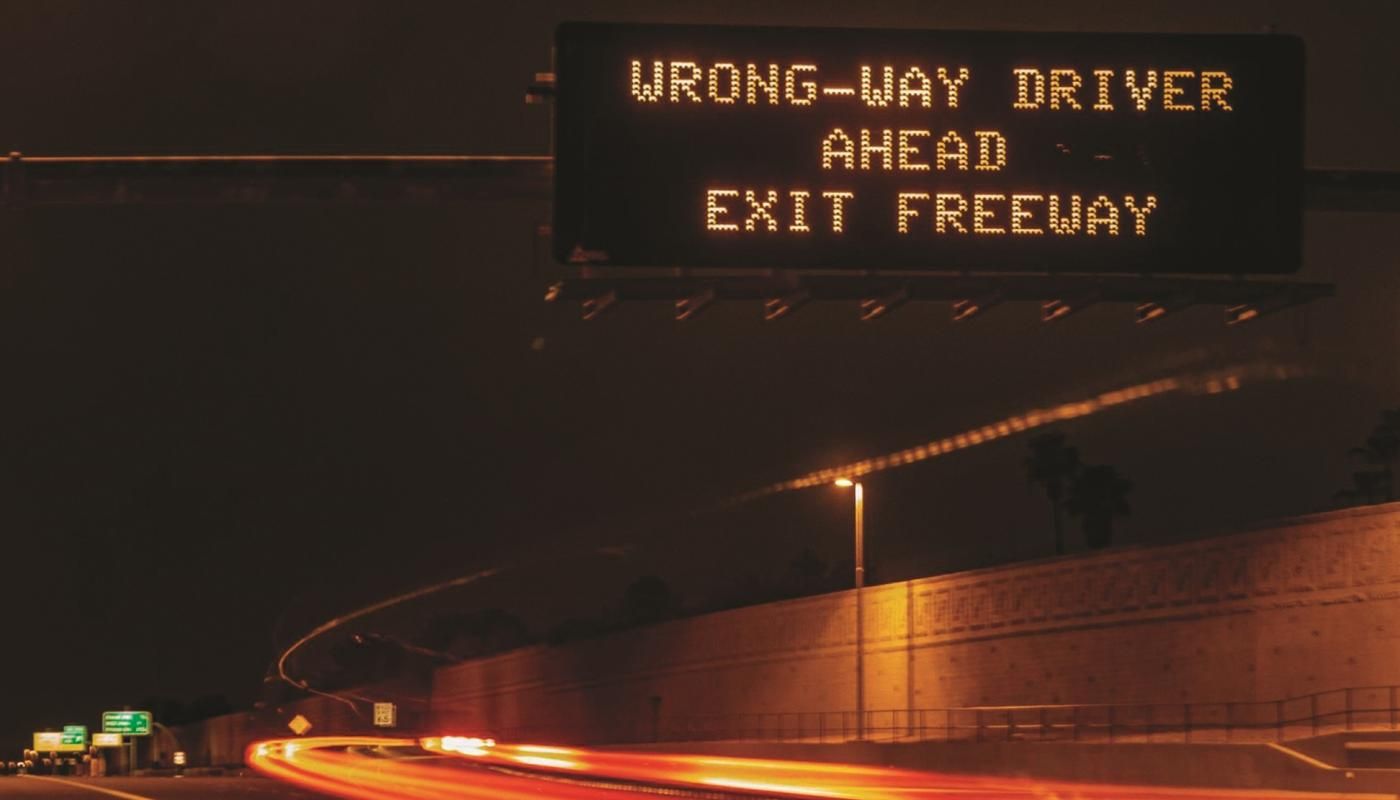Understanding the Severity of Wrong-Way Driving Incidents
Wrong-way driving is a dangerous traffic violation that occurs when a vehicle travels against the legal flow of traffic. These incidents are particularly hazardous because they often lead to head-on collisions at high speeds, resulting in catastrophic outcomes. According to the FHWA report, even though WWD events are relatively uncommon, their potential to cause severe accidents makes them a top priority for road safety initiatives.
The report highlights the disproportionate impact of WWD crashes, noting that they are more likely to result in fatalities than other types of traffic accidents. This is due to the nature of head-on collisions, which are less likely to be survivable, especially at freeway speeds. The urgency of addressing WWD is further underscored by the fact that these incidents often occur at night and involve impaired or distracted drivers, making prevention even more challenging.
The Role of Countermeasures in Preventing Wrong-Way Driving
The FHWA report provides a comprehensive overview of various countermeasures designed to reduce the occurrence of wrong-way driving. These measures range from physical infrastructure changes to advanced technological solutions, each with its own set of advantages and considerations for implementation.
1. Pavement Marking Arrows
One of the simplest yet effective countermeasures discussed in the report is the use of pavement marking arrows. These arrows, painted on freeway exit ramps and at intersections, provide visual cues to drivers, helping to prevent wrong-way entry. The report notes that these markings are particularly effective in reducing nighttime WWD crashes, where visibility is often limited.
2. Supplemental Signs
In addition to pavement markings, the report highlights the use of supplemental "DO NOT ENTER" and "WRONG WAY" signs. These signs are often larger than standard signs and are strategically placed to catch the attention of drivers who might be about to enter a roadway in the wrong direction. The use of enhanced visibility features, such as flashing lights or reflective materials, further increases the effectiveness of these signs.
3. Blank-Out and Flashing Signs
More advanced countermeasures include blank-out signs, which only activate when a wrong-way driver is detected. These signs display critical messages, such as "WRONG WAY," and are more likely to capture the attention of drivers who are already in the process of making a dangerous maneuver. The report also discusses the effectiveness of flashing signs, which can reduce the incidence of WWD by up to 88% when used at freeway ramps.
4. Geometric Improvements
The physical design of roadways plays a crucial role in preventing wrong-way driving. The FHWA report recommends geometric improvements, such as altering the design of ramps and intersections to make wrong-way entry more difficult. These improvements can include features like raised medians, channelizing islands, and tighter turn radii, all of which guide drivers into the correct lanes and away from prohibited paths.
5. Detector Systems
Perhaps the most advanced countermeasure discussed in the report is the use of detector systems. These systems rely on sensors to detect wrong-way vehicles and trigger immediate alerts to both the driver and authorities. Detector systems can be integrated with other technologies, such as in-vehicle alerts for connected and automated vehicles, making them a vital component of smart city infrastructure.
The Importance of a Comprehensive Approach
The FHWA report makes it clear that no single countermeasure is sufficient to fully address the problem of wrong-way driving. Instead, a comprehensive approach that combines multiple strategies is necessary. This approach not only enhances the overall effectiveness of WWD prevention efforts but also allows for greater flexibility in addressing the unique challenges posed by different road environments.
For example, while geometric improvements may be highly effective in urban areas with complex intersections, rural areas with fewer physical barriers might benefit more from advanced detector systems and enhanced signage. By tailoring countermeasures to specific conditions, road agencies can maximize their impact and significantly reduce the risk of wrong-way driving incidents.
Our Strategic Partnerships
At TraffiCalm, we are committed to advancing road safety through our SafePath™ Advanced Wrong-Way Detection System. In partnership with AM Signal, Pelco Products Inc, and Teledyne FLIR, SafePath™ integrates seamlessly with existing traffic management systems, utilizing cutting-edge thermal imaging and detection technologies to provide real-time alerts that can save lives. As we continue to embrace these innovative technologies, it's crucial that we collaborate with industry leaders to create safer roadways for all.
For more insights on safeguarding cities against wrong-way drivers, you can read this article on the topic: Safeguarding Cities Against Wrong-Way Drivers.
Conclusion: Moving Forward with Advanced Solutions
The 2024 FHWA report serves as a crucial reminder of the ongoing threat posed by wrong-way driving and the urgent need for advanced countermeasures. As traffic safety professionals, engineers, and city planners, it is our responsibility to implement these solutions and continuously evaluate their effectiveness in preventing these dangerous events.
For more information on the FHWA report and how SafePath™ can enhance your road safety initiatives, access the full report here.
